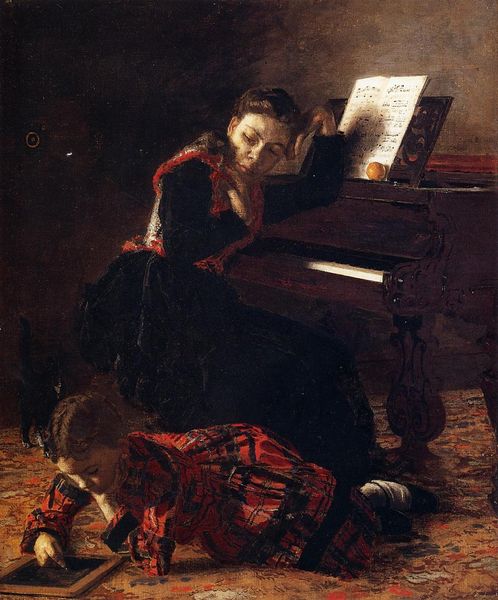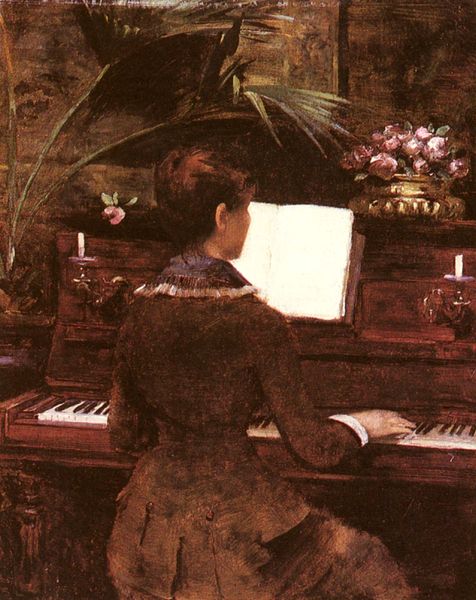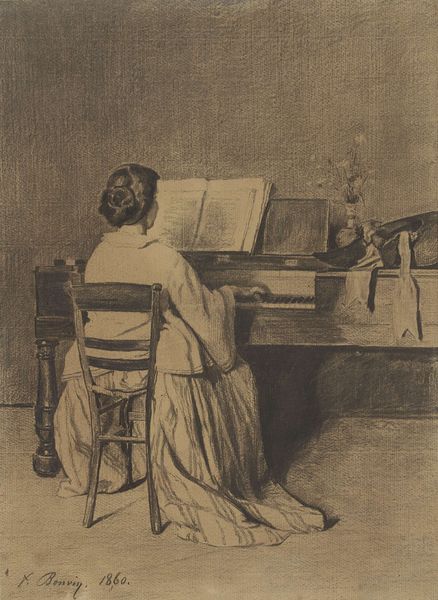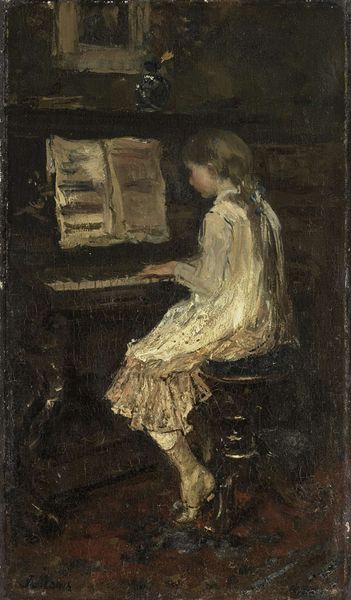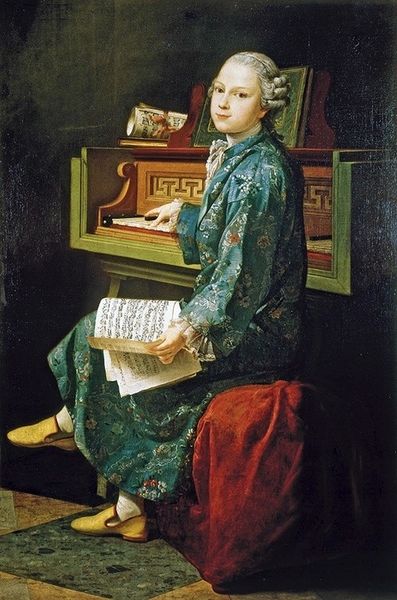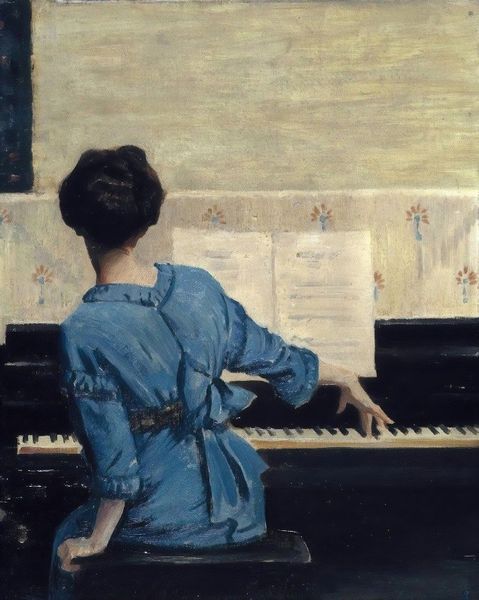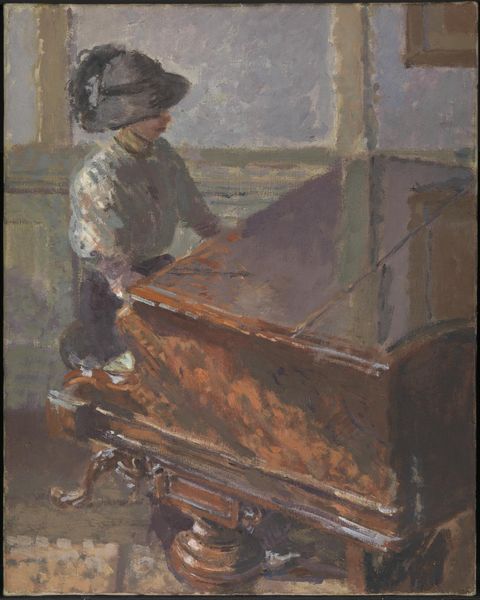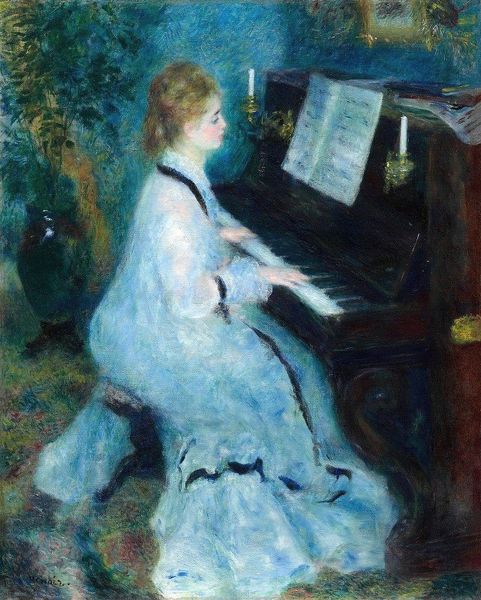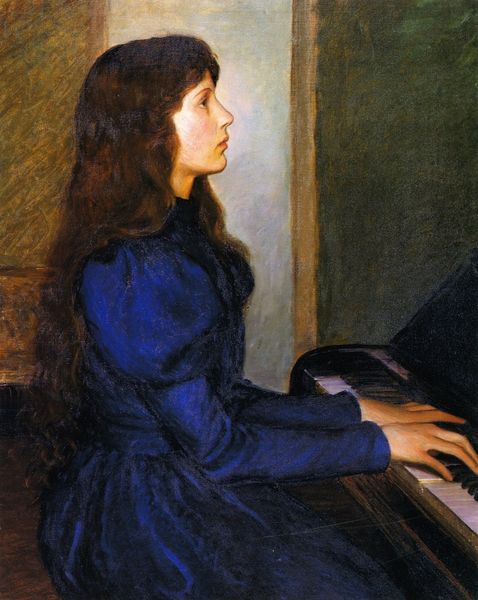
painting, oil-paint
#
portrait
#
painting
#
oil-paint
#
painted
#
oil painting
#
genre-painting
#
female-portraits
#
realism
Copyright: Public domain
Curator: This is "Elizabeth at the Piano" by Thomas Eakins, an oil on canvas portrait that exemplifies the American Realism movement. Editor: My first impression is the almost oppressive darkness; the artist seems to revel in shades of black and gray. There’s an intense focus on the light illuminating the music and her hands. Curator: Yes, Eakins uses this stark contrast brilliantly to emphasize Elizabeth’s intellectual engagement and the private sphere in which women found avenues for expression. Consider how social norms constrained women, particularly in the late 19th century. Editor: The geometry of the piano—its sharp angles—competes with the woman's form. Notice, though, how the horizontal lines of the keys and the verticality of the music stand create a visual rhythm. The sheet music itself becomes a focal point. Curator: Exactly. The sheet music elevates Elizabeth’s role beyond mere parlor entertainment. Playing and reading music was seen as both a marker of social status but also a means for intellectual self-cultivation. However, one could question whether these activities reinforce women’s confinement. Editor: Do you think? For me, it creates a contemplative, rather melancholy mood. There's something undeniably isolating about the scene; the woman is positioned in solitude, bathed in soft light, removed from direct social engagement. The palette further enforces a feeling of being closed-off. Curator: Agreed, and the darkness framing her underscores this. By situating the piece within a context of gender roles, class and burgeoning artistic movements, we expose the tension between the expectations placed on women of her status and the quiet but powerful agency of musical expression. Editor: Ultimately, the composition's reliance on shape and the manipulation of tone effectively isolate the moment of musical study and performance. Thank you for giving this work a compelling and fresh point of view. Curator: Thank you. Placing "Elizabeth at the Piano" within its socio-historical environment enriches our experience and complicates facile readings of a seemingly straightforward portrait.
Comments
No comments
Be the first to comment and join the conversation on the ultimate creative platform.
